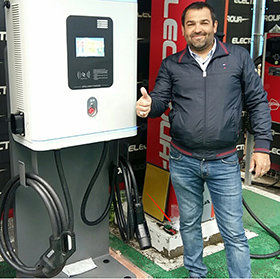I'm sure everyone will know that a few years ago graphene batteries were much hotter in the battery industry, but recently the talk has been lacking and the mainstream is still lithium batteries. Which is better, graphene or lithium batteries, comparing the pros and cons in terms of their own material properties and market applications, as well as their quality, etc.
Graphene battery advantages and disadvantages
Graphene battery: graphene battery, formed by carbon atoms in sp2 hybridization of honeycomb-like planar film, is a quasi-two-dimensional material with only one atomic layer thickness, also listed atomic layer graphite. The use of lithium ions in the graphene surface and electrodes between the characteristics of the rapid mass shuttle movement, the development of a new energy battery.
1、Graphene battery advantages.
1) The storage capacity is three times that of the best products on the market. Drunken advanced lithium batteries are 180 Wh/kg specific energy value, while graphene batteries exceed 600 Whkg.
2) An electric vehicle powered by this battery can be driven up to 1000 km and its charging time does not take 8 minutes.
3) Long service life. It is four times longer than conventional hydrogenated batteries and twice as long as lithium batteries.
4) Lightweight. The properties of graphene allow the weight of the battery to be reduced to half that of a conventional battery, which can increase the efficiency of machines that use such batteries.
5) Greater advantages of graphene over conventional batteries, which last twice as long as lithium batteries and four times as long as hydrogenated batteries.
6) Faster charging and more durable than lithium batteries at high temperatures.
2, graphene battery disadvantages.
(1) The current graphene is still some distance away from the practical stage, there is still a long time to achieve mass production.
(2) The graphene battery currently on the market is not pure. He is only an adulteration of graphene technology based on lithium batteries. Compared with the traditional lithium battery, its performance is not much improved. The cost of adding graphene and its manufacturing process is also complicated. The production process of graphene battery is still immature and is only in the laboratory stage. It is not capable of meeting mass production.
3) Incompatible process characteristics. It has an excessive specific surface area of graphene, which will create a large number of process problems for the dispersion homogenisation of existing lithium-ion batteries to come. This will greatly increase the adjustment workload of the battery factory, then the profit margin obtained becomes small, plus there is no relevant performance index, this technology will be rarely willing to do. Moreover, its surface properties in the chemical state have a large number of problems, stability, cycle life, etc., which, at the moment, do not meet the detailed requirements of lithium battery production.
About Li-ion batteries
1, lithium battery advantages
1) High energy density, its volume energy density and mass energy density can reach 450W.h / dm3 and 150w.h / kg, and is still increasing.
2) High average output voltage (about 3.6V), which is 3 times higher than Ni-CD and Ni-L batteries.
3) High output power.
4) Small discharge, less than 10% per month, less than 50% of Ni-Cd, Ni-ml.
5) Better cycling performance compared to NI-CD, Ni-MH batteries, without their memory effect.
6) Fast charging and discharging, 1C charge when capacity can reach more than 80% of nominal capacity.
7) High efficiency charging rate, basically 100%[xss_clean_space]after the first cycle.
8) Wide operating temperature range, -30 + 45°C, expected to widen with improvements in electrolyte and positive electrode to -40 + 70°C, low temperatures can be extended to -60°C.
9) No repair required.
10) More "earth friendly" and green.
(11) Long service life, 100% DOD charge and discharge can reach more than 900 times; when using shallow depth (30% DOD) charge and discharge, the number of cycles has exceeded 5000 times.
2、Lithium battery disadvantages
1) High cost, mainly due to the high price of the cathode material LiC002; with the continued development of cathode technology, it is expected that the cost of lithium-ion batteries can be greatly reduced.
2) Special protection circuits must be in place to prevent overcharging or discharging.
3) Poor compatibility with normal batteries, as three normal batteries (3.6V) are usually required before Li-ion batteries can be replaced.
In the present case, lithium batteries are more favourable than graphene batteries in terms of manufacturing costs and market economics from the point of view of technological maturity in research and development. Regardless of which battery is used, the demand for charging piles remains huge. In addition to more standardised and systematic charging, safety hazards, space utilisation and technical updates to equipment are all areas of effort for EV battery charging piles in Yue Wan Tong.
Luoyang Grasen Power Technology Co., Ltd is a professional AC home charger and DC fast charger EV supercharger manufacturer for 11 years in China, the charging connectors can be any two of CCS1/CCS2/CHAdeMO/GBT. Please enter our website for more information: https://www.grasen.com. Please send email to sales@grasen.com for inquiry.

-- Marcus Groll,A Charging Station Owner in UKRAINE
Start your EV charging station businesses with Grasen. For a no-obligation quote, hit the button below, fill in your details, and we’ll get back to you.
